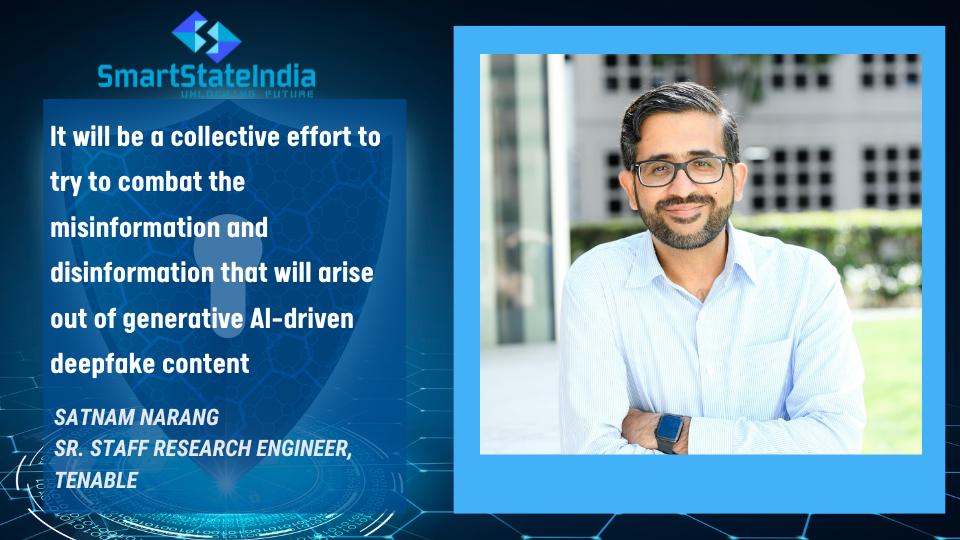- Generative AI, like VAEs and GANs, excels at mimicking data patterns, enabling realistic deep fakes for entertainment, medicine, and more.
- A multifaceted strategy is needed, including tech safeguards like content watermarks, media literacy, and ethical regulations.
- Spotting AI-generated content is challenging due to AI advancements. Look for unnatural writing, check metadata, and use linguistic analysis for identification.
- EU Commissioner for Internal Market Thierry Breton stated that the European Union is advocating for tech companies to incorporate watermarks into content generated by artificial intelligence.
In the realm of digital manipulation, the marriage of Generative Artificial Intelligence (AI) and deep fakes has given rise to a complex and often controversial alliance. Generative AI, capable of producing highly realistic content, has found a particularly intriguing application in the creation of deep fakes – hyper-realistic videos or images where individuals’ likenesses are convincingly altered or manipulated. This potent amalgamation presents both creative opportunities and ethical challenges, pushing the boundaries of what’s possible in media production.
Generative AI algorithms, such as Variational Autoencoders (VAEs) and Generative Adversarial Networks (GANs), excel at understanding and mimicking patterns in data. When applied to deep fakes, they can replicate facial features, expressions, and voice nuances with remarkable accuracy. This fusion has revolutionised the fields of entertainment, visual effects, and even medical simulations. Actors can be placed into scenes they have never filmed, historical figures can “speak” modern languages, and medical students can practise procedures on AI-generated anatomical models.
However, this synergy also raises serious ethical concerns. The realism achieved by generative AI-assisted deepfakes can easily deceive audiences, leading to misinformation, identity theft, and privacy breaches. Political leaders, celebrities, and ordinary individuals can be unwittingly implicated in fabricated scenarios, causing damage to reputations and sowing discord. As this technology advances, the potential for sophisticated cyberattacks and scams becomes a genuine threat.

Deep fakes pose a threat to news integrity since they can be used to convincingly create events or remarks, weakening faith in media sources. They allow for the manipulation of narratives and public perception in politics, potentially impacting elections and international relations. In addition to this, they prove to be a threat to privacy because anyone can be targeted with fake videos, causing reputational and emotional harm. Deep fakes can circumvent cybersecurity protections, making it more difficult to detect and prevent fraud. Maheswaran Shanmugasundaram, Country Manager- S. Asia, Varonis Systems
Addressing these challenges requires a multifaceted approach. Technological safeguards, like watermarking systems that identify manipulated content, are essential. EU Commissioner for Internal Market Thierry Breton stated that the European Union is advocating for tech companies to incorporate watermarks into content generated by artificial intelligence. Similarly, media literacy efforts should empower individuals to critically assess online content. Additionally, ethical guidelines and regulations can provide a framework for responsible AI use.

Deep fakes have the potential to disrupt political landscapes by spreading false information. Politicians can be targeted with manipulated videos or audio recordings, leading to false accusations or damaging narratives that influence elections and public opinion. Individuals’ privacy is at risk as deep fakes can be used to create fake videos or audio recordings that impersonate them. These can be exploited for cyberbullying, defamation, or extortion, leading to significant emotional and reputational harm. Sanjay Khera – Head of Marketing – Eventus Security
Detecting AI-generated content can be challenging due to the rapid advancement of AI technologies, but several methods can help identify it. Firstly, one can look for telltale signs of unnatural or machine-like writing, such as an overly formal tone, lack of emotion, or inconsistencies in logic. AI-generated text may also lack the depth of human insight and context. Secondly, examining metadata and the source of the content can be useful. Check for information about the author, publication date, or any automated tools used for content creation. Additionally, linguistic analysis and stylometric techniques can unveil AI-generated content by identifying patterns and anomalies in the language used.

Machine learning models are continually evolving to detect AI-generated content, and specialised software tools are emerging to aid in this task. Staying updated with these advancements and using them can be an effective approach to spot AI-generated content. Nonetheless, as AI technology progresses, so too must our detection methods to keep pace with increasingly convincing AI-generated content.
“It is critical to raise public knowledge about the existence and dangers of deep fakes. Campaigns and efforts can educate people about potential risks and encourage judicious media consumption. To counter these challenges, legal systems must evolve to include powerful forensic tools for deep fake detection. Furthermore, media literacy and critical thinking skills must be fostered to enable citizens to adequately scrutinise content. Without these precautions, the spread of deep fakes driven by generative AI can erode confidence, disrupt legal proceedings, and jeopardise public discourse’s integrity”, said Maheswaran Shanmugasundaram
In conclusion, the synergy between generative AI and deep fakes showcases the immense capabilities of technology to reshape media production. However, the responsible utilisation of this technology is crucial to mitigate its negative consequences. Striking a balance between innovation and ethical considerations will determine whether this alliance proves beneficial or detrimental to society at large.




3 comments
fnezdo
0lcn12
yacw5q